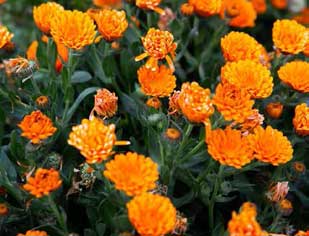Beneficial Insects
As we carry out our gardening tasks, we are often unaware of the great deal of work being done by our allies in the garden, the hoard of beneficial insects that play such an important role in natural pest control.
There is a huge array of beneficials, including hover flies, lacewings, parasitic and predatory wasps, ladybirds, predatory mites, spiders, ground beetles and the list goes on! Many have fascinating life cycles, particularly the parasitic wasps.
One parasitic wasp, Trissolcus basalis, lays its eggs in the sulphur-yellow eggs of the Green Vegetable Bug. This wasp is black and very tiny, only about l mm long. It was introduced to Australia back in the 1930s, specifically to control this pest. However, it probably cannot control bug numbers on its own, so it would be wise to also use other control methods for the veggie bug, such as the “squish’m” approach as summer comes on.
Other parasitic wasps lay their eggs inside the larvae of common garden pests. The larvae of the wasps feed inside the host, but do not actually kill it until they burst out, at which stage they pupate on the collapsed skin of the now dead host (rather gruesome isn’t it). One, the Cotesia glomerata, is a parasite for the Cabbage White Butterfly.
A third type of parasitism occurs with the aphidine parasitic wasp which attacks aphids. In this case the wasp passes its entire larval and pupal stages inside the host body and bursts out as an adult. Many wasps are predatory of course. Two predatory wasps are the paper wasps, which build their nests out of chewed wood “paper”, often under the eaves of houses, and the mud wasps, with their familiar mud nests on the walls of buildings. Both will feed caterpillars and spiders to their larval stages. The paper wasp will also prey on the pear and cherry slug. If you find these nests around your home don’t destroy them just to tidy up, or you will lose valuable allies in the garden!

There are so many insects it is impossible to describe a fraction of them here, but if you see an insect and you wonder if it is a beneficial one, the following may help:
“As a general rule, fast moving grubs and related creatures are beneficial. They need to be fast as their prey, small slugs and insects, is mobile. Plant eaters, pests from our point of view, tend to be more “sluggish”.”
Joy Larkcom, “Vegetables from Small Gardens”, p 93. Source: The HDRA Newsletter (from England) in Spring 1993
Given the usefulness of many insects, we need to encourage them in our garden. Here are some measures you can take to attract them:
Stop using pesticides
Many pesticides kill beneficial insects as well as pests. Since pests tend to breed very fast, they will often come back first.
Remember: “Whenever we kill a beneficial insect we inherit its job. And as novices we are attempting to take on the task of an expert. Whenever we fail, the environment suffers.” Stuart Hill, Acres Vol 1, No 7, p10 “Broad perspective on sustainable agriculture”.
Only use organic sprays if you must. Many are not harmless, e.g. sulphur fungicide harms parasitic wasps and predatory mites; insecticide soap harms hover fly larvae.
Grow flowers to feed them
Flowers are a source of food for many pest-controlling insects, particularly in their adult form. Many have short mouthparts, so simple open flowers or very small flowers are best. Among the favourites are flowers such as fennel, parsnip, parsley, daisies, dandelions, marigolds, sunflowers, thistle, and yarrow.

In a recent study, it was shown that the fennel flowers attract almost 500 different species of insects, of which 195 were partly predatory and 105 were parasitic.
Provide a nursery
It is essential to have some pests in your garden if you want the beneficial insects to come in as well. The idea is to control, not eradicate pests, so we need to tolerate a low number of them. Therefore, it can be useful to allow a small number of nursery plants in your garden. A “nursery” plant is one which supports pests with no ill effect. For the U.K., HDRA gives the example of the common nettle which supports the nettle aphid which however does not attack other garden plants. Nettles will therefore attract many beneficial insects, particularly ladybirds when they emerge from hibernation. The nettles can then be cut down in summer so the predators will move to garden plants. However, don’t let the nettles become a weed!
Provide safe cover
Ground-dwelling insects do not like bare soil. Provide dark, cool moist conditions with ground covers, carpet, bits of bark etc.
Don’t be too tidy
Leave cover for other insects, including some old plant material. HDRA suggests you don’t cut back your herbaceous borders in autumn as the hollow stems are a favourite hibernation place.
Following these six steps will encourage beneficial insects to stay in your garden and help keep down the numbers of garden pests. As an added benefit, the increased insect life will also create a more interesting garden to be in.
Canberra Organic Growers Society Inc. (October 2018)